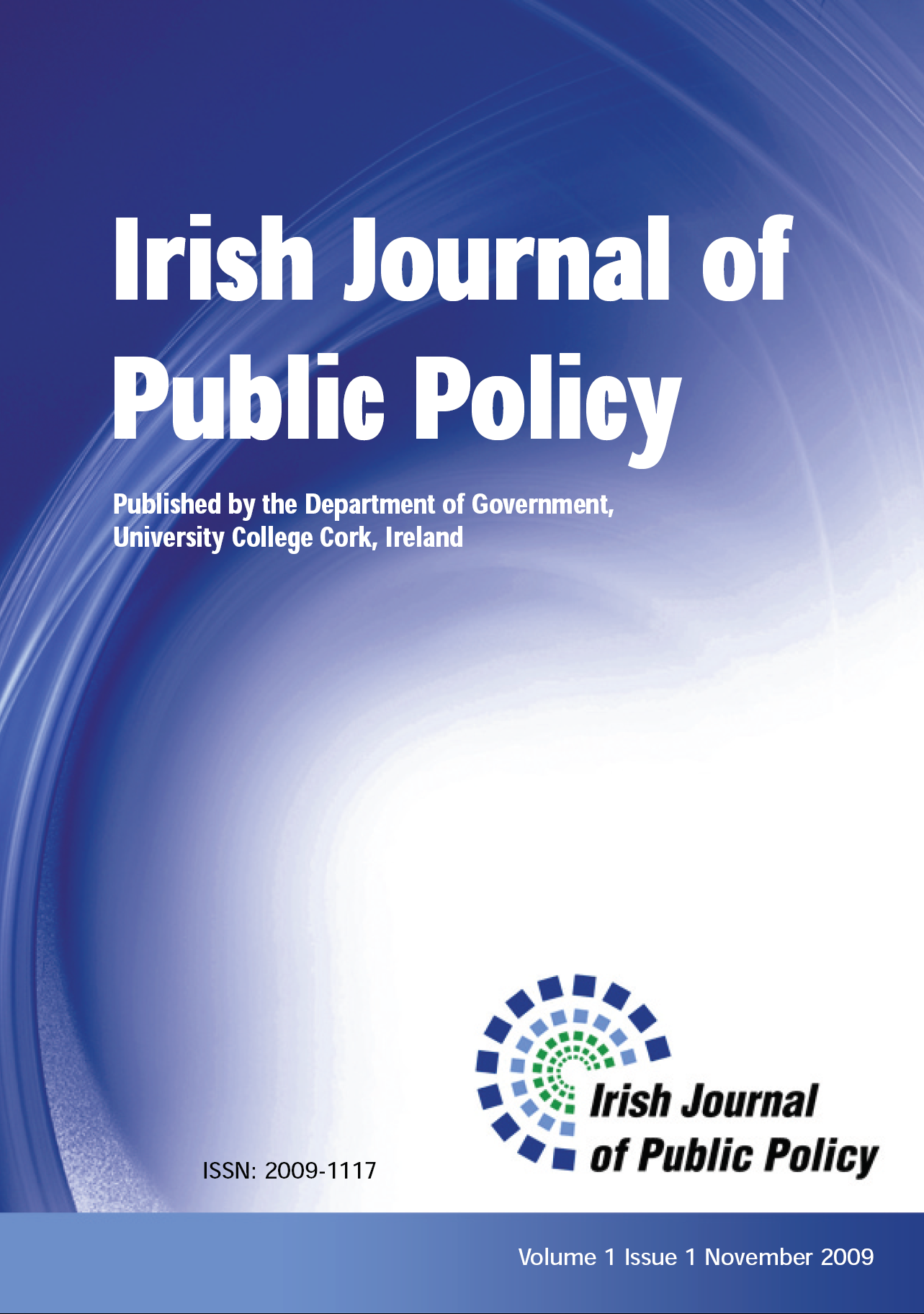Challenges for Regulatory Impact Analysis
DOI:
https://doi.org/10.33178/ijpp.1.1.4Abstract
Regulations are important in achieving economic and social goals. Governments must ensure that their legislation is as up-to-date as possible, while reflecting current issues of public concern. At the same time, governments need to have processes in place to review the extent to which existing regulations are achieving their objectives. Techniques, such as Regulatory Impact Analysis (RIA), are used to help produce better regulations at minimum cost. While RIA is relatively new in Ireland, it has already gained widespread acceptance in developed economies and throughout the EU. This article outlines what RIA involves, where it is being applied, describes the Irish experience of RIA, and offers suggestions as to how it can be made more robust in its application.References
APEC-OECD (2007), Integrated Checklist on Regulatory Reform: Self-Assessment by Australia, Economic Committee Meeting, Cairns, Australia: APEC-OECD.
Boyle, R. (2005), Regulatory Impact Analysis: Lessons from the Pilot Exercise, Dublin: Institute of Public Administration.
Department of the Taoiseach, (2005a), Report on the Introduction of Regulatory Impact Analysis, Dublin: Department of the Taoiseach.
Department of the Taoiseach, (2005b), RIA Guidelines: How to conduct a regulatory Impact Analysis Report, Dublin: Department of the Taoiseach.
Department of the Taoiseach, (2005c), Reaching Out: Guidelines on Consultation for Public Sector Bodies. Dublin: Department of the Taoiseach.
Department of the Taoiseach, (2009a), Revised RIA Guidelines: How to conduct a regulatory Impact Analysis, June, Dublin: Department of the Taoiseach.
Department of the Taoiseach, (2009b), Government Statement on Economic Regulation, October, Dublin: Department of the Taoiseach.
EIU (2009), Review of the Economic Regulatory Environment, commissioned by the Department of the Taoiseach, Dublin.
European Commission (2009a), http://ec.europa.eu/governance/impact/consultation/ia_consultation_en.htm Brussels: European Commission.
European Commission, (2009b), Impact Assessment Guidelines, SEC (2009) 92, Brussels: European Commission.
Ferris, T. (2000), ‘The Role of Government’ in John Mangan and Kevin Hannigan (eds.), ‘Logistics and Transport in a Fast Growing Economy: Managing the Supply Chain for High Performance’, Irish Management Institute, Blackhall Publishing Ltd.,Dublin.
Ferris, T. (2006), Broadening the regulatory scope, Public Affairs Ireland Journal, Issue No. 32, Dublin: Public Affairs Ireland.
Goggin, I and Lauder, G. (2008), Review of the Operation of Regulatory Impact Analysis, Dublin: Department of the Taoiseach.
Mandelkern Group on Better Regulation (2001), Final Report, 13 November 2001, Brussels, Belgium: European Commission.
Mulreany, Michael (2002), Cost Benefit Analysis Readings, Dublin: Institute of Public Administration.
OECD (2008), Building an Institutional Framework for Regulatory Impact Analysis (RIA); Guidance for Policy Makers, Paris, France.
Parker, D. and Fitzpatrick C. (2007), Researching Economic Regulation in developing Countries: Developing a Methodology, Scientificcommons
Radaelli, Caludio M. (2004), The diffusion of regulatory impact analysis - best practice or lesson-drawing?, European Journal of Political Research, Essex, England: European Consortium for Political Research.
Small Business Forum (2006), Small Business is Big Business: Report of the Small Business Forum, Dublin: Forfás.
Downloads
Published
Issue
Section
License
Copyright (c) 2009 the author(s)

This work is licensed under a Creative Commons Attribution-NonCommercial-NoDerivatives 4.0 International License.



